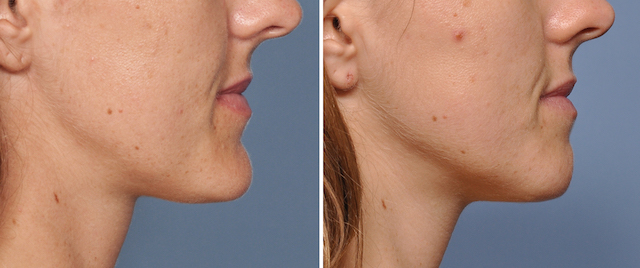Chin reduction, while less commonly performed than chin augmentation, is also an important form of chin reshaping surgery that can improve one’s profile. It involves changing the size and possibly the shape of the chin in order to make it appear smaller. It is far more commonly performed in females than in men. It is beneficial to those who have a large chin that looks disproportionate compared to the upper two-thirds of the face. A chin may look too large in two dimensions, either being too long vertically or projecting too far forward horizontally. In some cases, both dimensions of the chin may be enlarged but usually one dimension is largely at fault.
All chin reduction methods require careful attention to how the bone is taken down and how the soft tissues surrounding the reduced bone are managed. If the soft tissues are stripped off the bone and the bone underneath them reduced in size, do not expect the soft tissues to reattach and shrink down to the now reduced skeletal support. The soft tissue chin pad has limited ability to become less in size through soft tissue contraction. Because it is stretched over a bony projection the soft tissue chin pad has a tendency to ‘ball up’ rather than lay down smoothly over a reduced chin bone size.
Frontal and profile photographic analysis should be done before surgery to determine how much chin reduction is needed. Since there is a pretty good linear relationship between bone changes in the chin and the overlying soft issues, preoperative photographic analysis and imaging is helpful.
Horizontal Chin Reduction
While it is tempting to use an intraoral approach and burr down the front of the chin, this can be ill-advised and is a potential cause of soft tissue chin ptosis. The soft tissue chin pad simply falls off of the reduced bone and can regain its periosteal attachments like before. At the least if this approach is taken for a small reduction of a few millimeters, a strong mentalis muscle resuspension is needed for chin ptosis prevention. But in general this approach should be avoided.
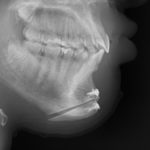
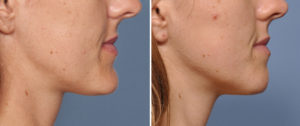
Vertical Chin Reduction
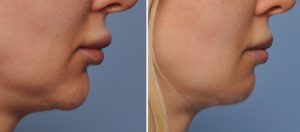
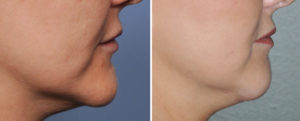
Dr. Barry Eppley
Indianapolis, Indiana

